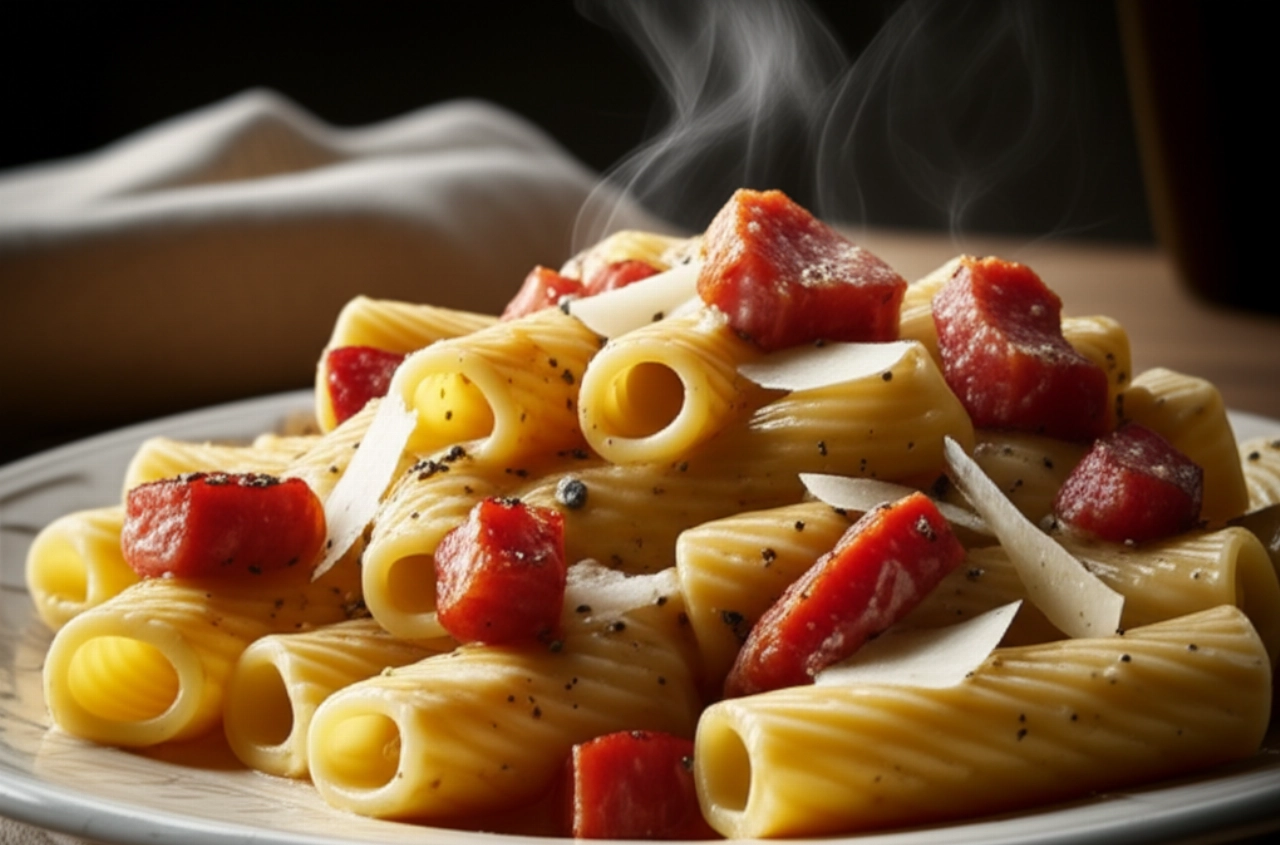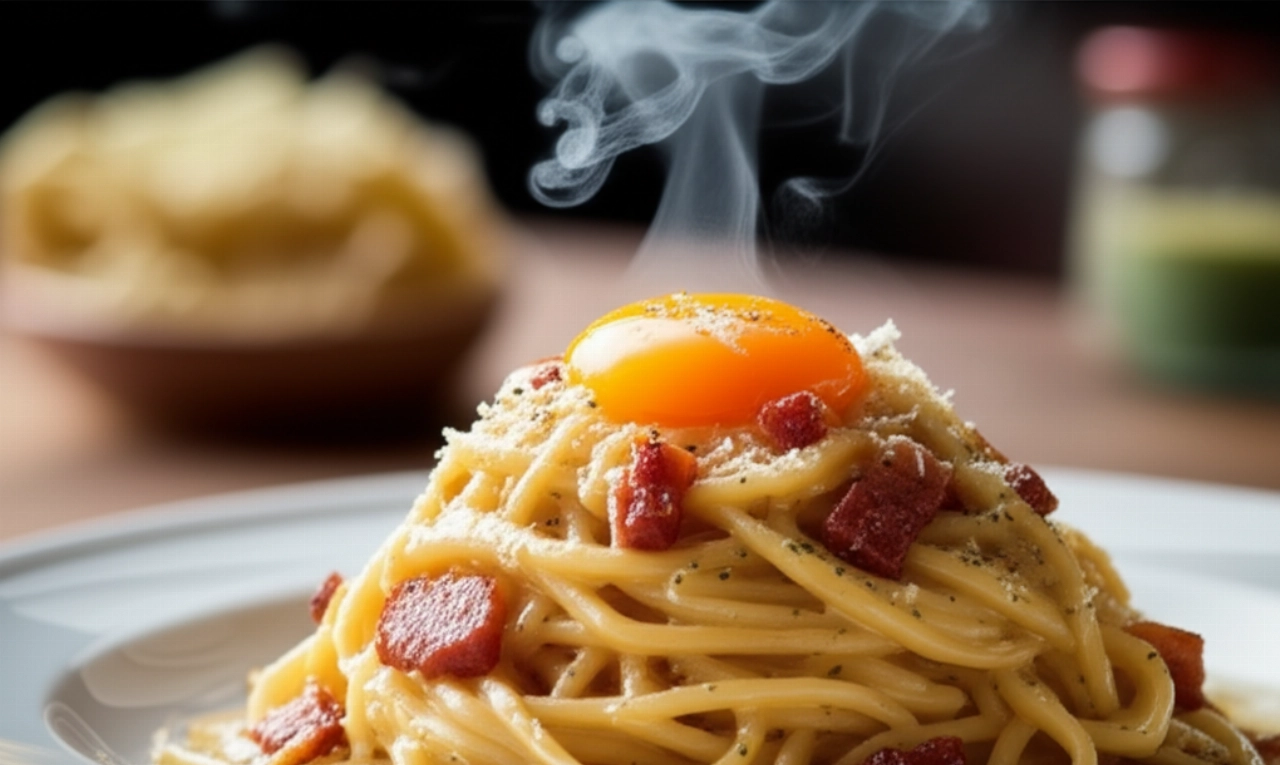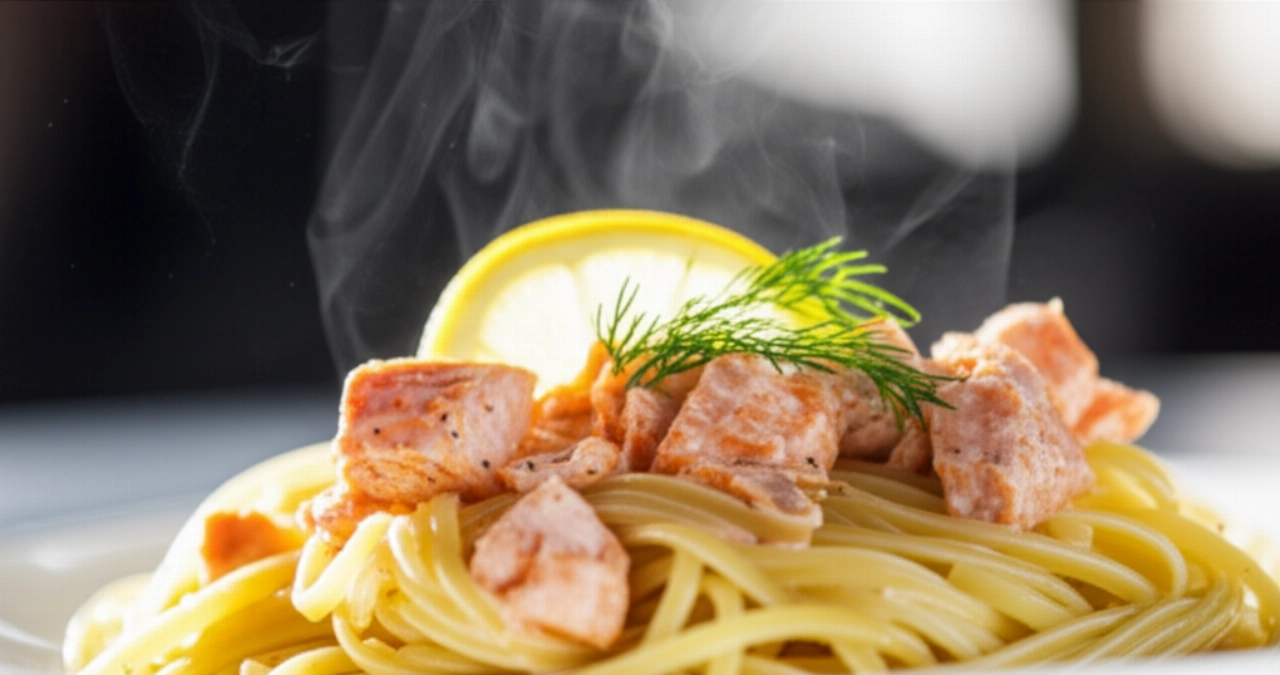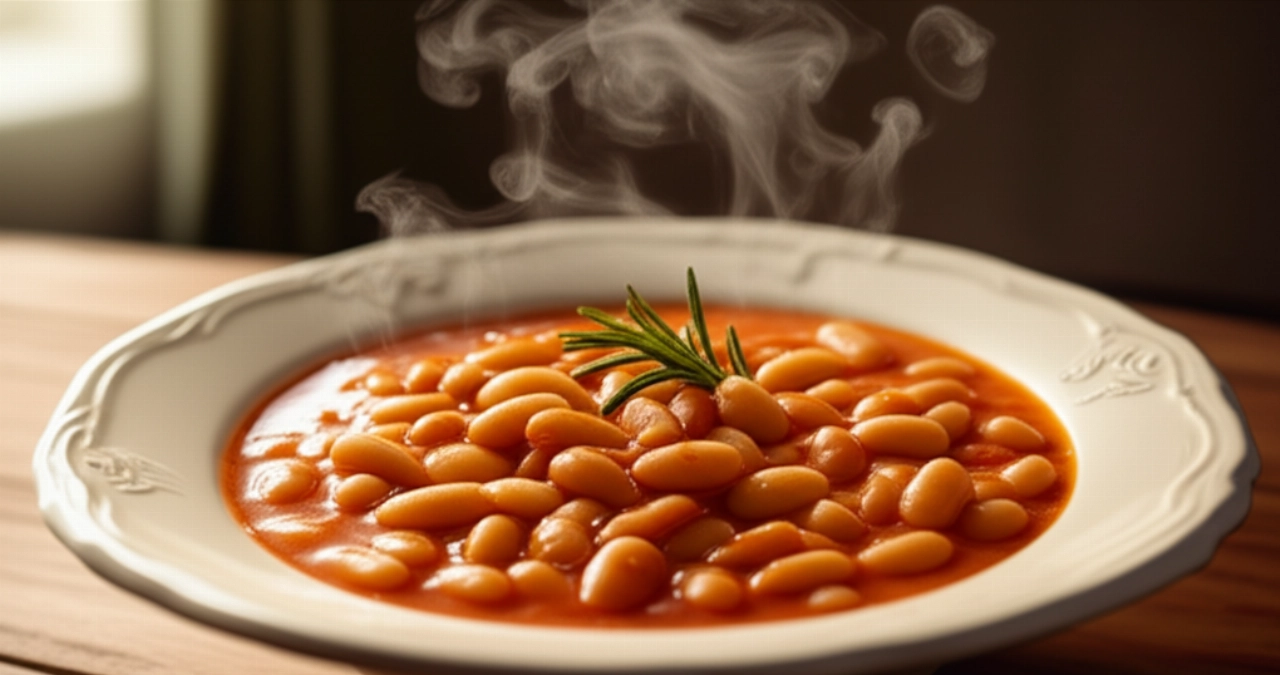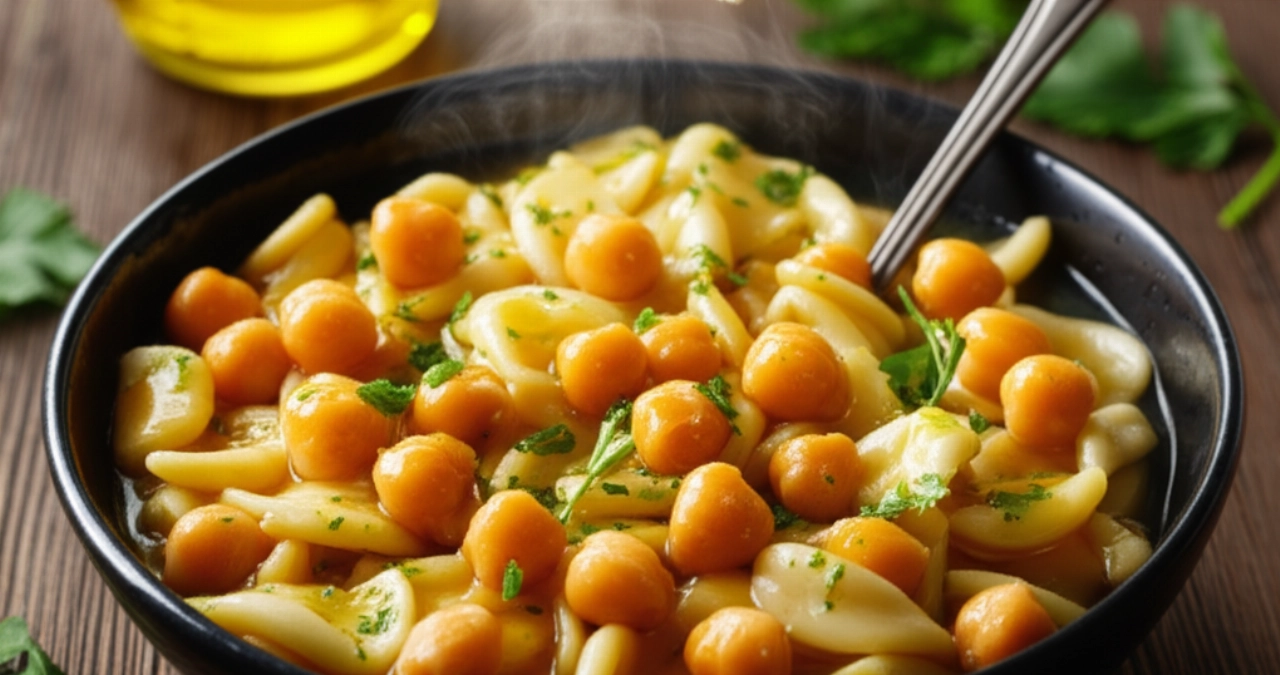Dreaming of a plate of Amatriciana Pasta that transports you directly to the trattorias of Rome, with that unmistakable aroma of crispy guanciale and an intense red sauce that coats every bucatino? That feeling of authenticity that only true Roman cuisine can offer?
Too often, however, the result is disappointing: soggy guanciale, acidic sauce, or pasta that doesn't "bind" well. Finding the true recipe, one that respects tradition and guarantees spectacular success, can seem like a challenge, a labyrinth of conflicting versions and advice.
Make yourself comfortable. On this page, you won't just find a list of ingredients, but the definitive guide, full of tricks and tips, to prepare the most authentic and delicious Amatriciana Pasta of your life. Success is guaranteed, and the taste of home awaits you. I'll guide you step by step, revealing the secrets for perfect guanciale and an enveloping sauce, just like a grandmother from Amatrice would make it.
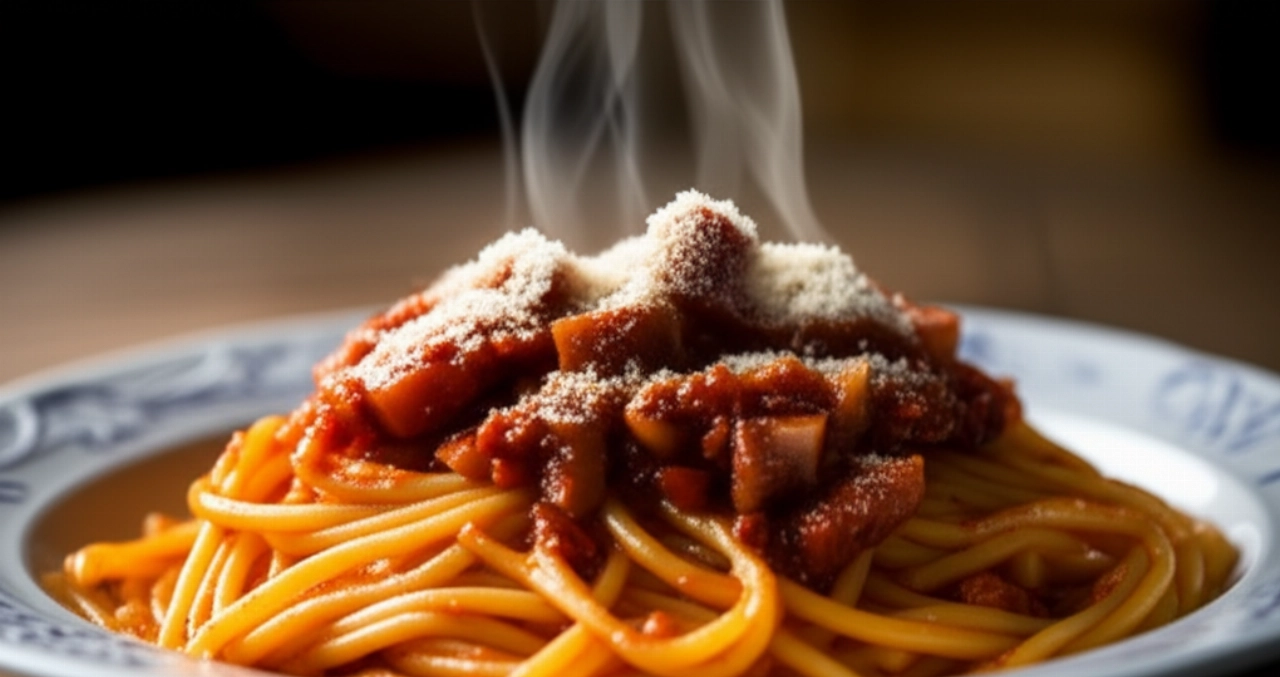
Ingredients for a Perfect Amatriciana: The Choice That Makes the Difference
For a show-stopping Amatriciana, the quality of the ingredients is fundamental. It's not just about quantity, but about choosing the right ones. Here's what you need and why:
- Guanciale from Amatrice (or quality guanciale): Forget pancetta! Guanciale is the true star. Its fatty part, once rendered, releases an unmistakable flavor and crispiness. Choose it aged, with pink meat veins and white fat. You'll need about 150-200g for 4 people.
- Pecorino Romano DOP: Another pillar. Its savory and slightly pungent flavor is irreplaceable. Do not use Parmigiano, it would alter the authentic taste. Grate it fresh to release all its aromas.
- Peeled Tomatoes or Quality Passata: Tradition calls for peeled tomatoes, crushed by hand. If you can't find them, a good thick and sweet tomato passata will work perfectly. Avoid out-of-season fresh tomatoes, they might make the sauce watery and acidic.
- Fresh or Dried Chili Pepper: To add that spicy note that "ignites" the dish. Adjust the quantity to your taste.
- Dry White Wine (optional but recommended): A good glass to deglaze the guanciale and the bottom of the pan. It adds complexity to the flavor.
- Pasta: Bucatini or Spaghetti: Bucatini are the classic choice, perfect for capturing the sauce inside. Spaghetti are an excellent alternative. Choose a high-quality durum wheat pasta.
- Salt and Black Pepper: To adjust the flavor.
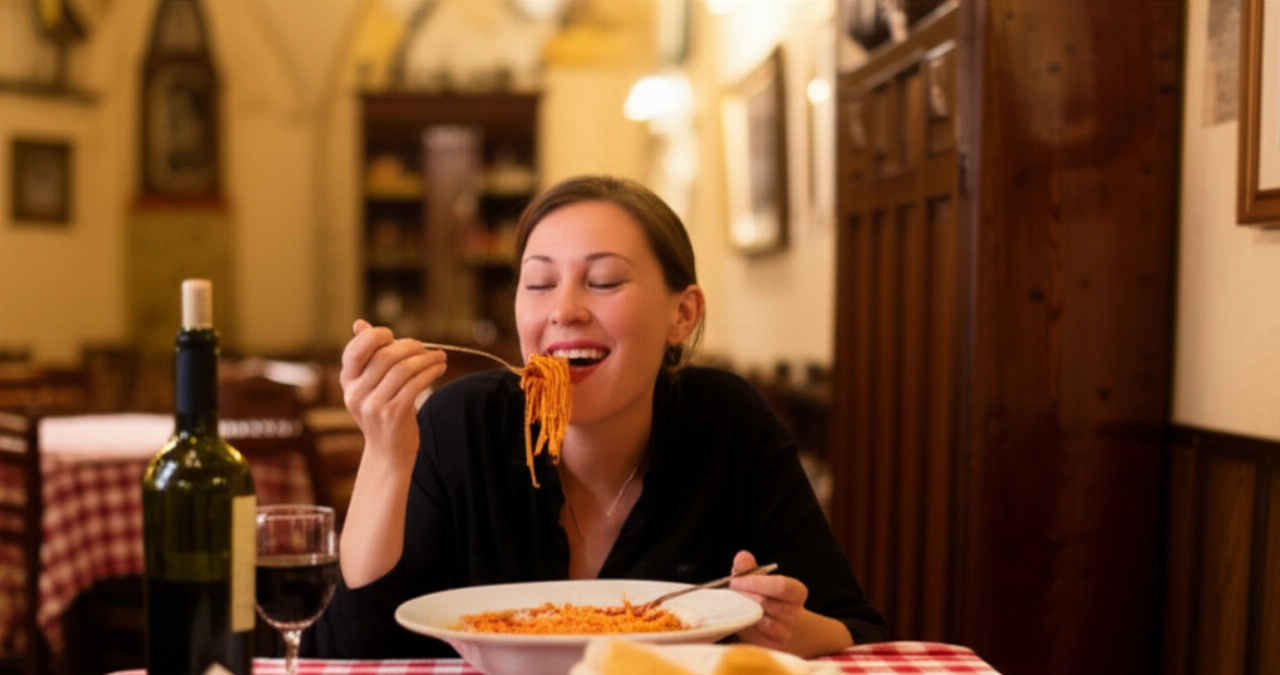
3 Common Amatriciana Mistakes (and How to Avoid Them)
Even the most experienced cooks can fall into these traps. But not you! I'll reveal how to avoid them for an impeccable result:
- Using Pancetta Instead of Guanciale: This is mistake number one! Pancetta has a different flavor and texture. Guanciale, with its noble fat, is the only ingredient that can provide that crispiness and deep flavor characteristic of authentic Amatriciana. Do not give in to the temptation to substitute it!
- Not Rendering the Guanciale Properly: The guanciale must become crispy and golden, releasing all its precious fat. Don't be afraid to cook it over medium-low heat, slowly, until it's perfect. Soggy guanciale ruins the entire experience.
- Not Properly Emulsifying the Pasta: Amatriciana is not just sauce and pasta. The magic happens when the pasta, drained al dente, is tossed in the sauce with some of the Pecorino and a little pasta cooking water. This creates an enveloping creamy sauce that binds all the flavors. Do not serve "naked" pasta with sauce on top!
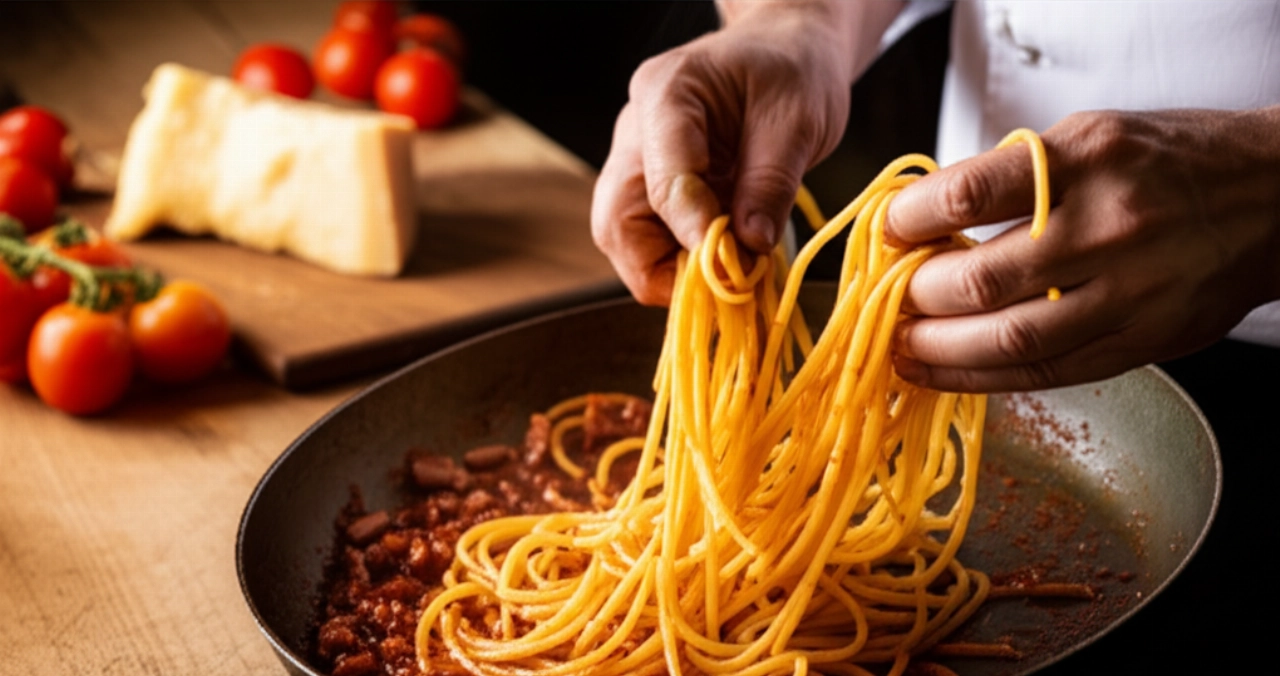
The Extra Touch: The Secret to an Enveloping Sauce
My grandmother, when preparing Amatriciana, had a small ritual that made all the difference. After rendering the guanciale and removing it from the pan, she would deglaze the bottom with a splash of dry white wine. "This is where all the flavor gathers, my grandchild," she would say. This step, called "deglazing," allows you to dissolve the caramelized juices and flavors from the bottom of the pan, incorporating them into the sauce. The result? A richer, deeper, and incredibly enveloping sauce. If you don't have wine, a ladleful of pasta cooking water will have a similar effect.
Let's Prepare the True Amatriciana Together: The Step-by-Step Guide
Are you ready? Let's get cooking! Follow these steps and success will be guaranteed.
- Prepare the Guanciale:
Remove the rind from the guanciale (you can keep it and add it to the sauce for more flavor, removing it before serving). Cut the guanciale into strips about half a centimeter thick. - Render the Guanciale:
Place the cut guanciale in a non-stick pan (no oil needed, the guanciale will release its fat) and let it render over medium-low heat. It should become crispy and golden. This will take about 8-10 minutes. Once ready, drain it with a slotted spoon and set it aside on paper towels, leaving the precious fat in the pan. - Prepare the Sauce:
In the same pan with the guanciale fat, add the chili pepper (whole or chopped, as desired). If using white wine, deglaze the bottom of the pan and let the alcohol evaporate. Add the peeled tomatoes (crush them with your hands or a fork) or the passata. Season with salt (remember that guanciale and pecorino are already salty). Let the sauce simmer over low heat for about 15-20 minutes, until it has thickened. - Cook the Pasta:
Meanwhile, bring plenty of salted water to a boil and cook the bucatini (or spaghetti) according to package instructions, draining them very al dente (a couple of minutes before the indicated time). - Perfect Emulsification:
Drain the pasta and transfer it directly to the pan with the sauce. Add a generous handful of grated Pecorino Romano and a ladleful of pasta cooking water. Emulsify vigorously over high heat for a couple of minutes, stirring well, until the sauce has bound to the pasta, creating an enveloping creamy sauce. - Complete the Dish:
Add most of the crispy guanciale set aside. Stir gently. - Plate and Serve:
Serve the Amatriciana Pasta immediately, hot, garnishing each plate with the remaining crispy guanciale and another sprinkle of Pecorino Romano. A touch of freshly ground black pepper will complete the masterpiece.
Tips and Frequently Asked Questions about Amatriciana Pasta
Here are some of the questions I get asked most often. I hope they help you!
- Can I use pancetta instead of guanciale?
- No, I strongly advise against it if you want true Amatriciana. Guanciale is the key ingredient that defines the flavor and texture of this dish. Pancetta, even if smoked, does not have the same noble fat and does not release the same aroma.
- What is the best pasta for Amatriciana?
- Traditionally, bucatini are used, for their ability to "capture" the sauce inside. Spaghetti are also an excellent choice. The important thing is that it is a high-quality durum wheat pasta that holds up well to cooking.
- Can I add onion or garlic?
- The traditional Amatriciana recipe does not include onion or garlic. The flavor should be dominated by guanciale, tomato, and pecorino. Adding other aromas would distort the dish. Trust in simplicity!
- How do I make the guanciale crispier?
- The secret is slow cooking over medium-low heat. Don't rush. Let the fat melt gradually and the lean part become golden and crispy. Once ready, drain it immediately and place it on paper towels to remove excess grease.
- Can I prepare the sauce in advance?
- Yes, you can prepare the tomato sauce in advance and store it in the refrigerator for a couple of days. However, it's best to render the guanciale just before tossing the pasta, to ensure maximum crispiness.
There you have it! Now you no longer just have a recipe, but all the secrets to bring to the table an Amatriciana that will make you dream, a true ode to Roman cuisine, capable of warming the heart and palate. You'll feel like a true chef, but with the simplicity and warmth of a grandmother.
Don't be afraid to challenge yourself. Cooking is joy, creativity, and sharing. With this solid foundation, you will be the star of your next dinner, and applause will not be lacking, I assure you.
Have you prepared our Amatriciana? We can't wait to admire your masterpiece! Leave a comment below, tell us about your experience, or share a photo on Instagram by tagging @CercaRicette.it. If you loved this classic, also discover our recipe for Perfect Carbonara Pasta or for an unforgettable main course like Saltimbocca alla Romana.
